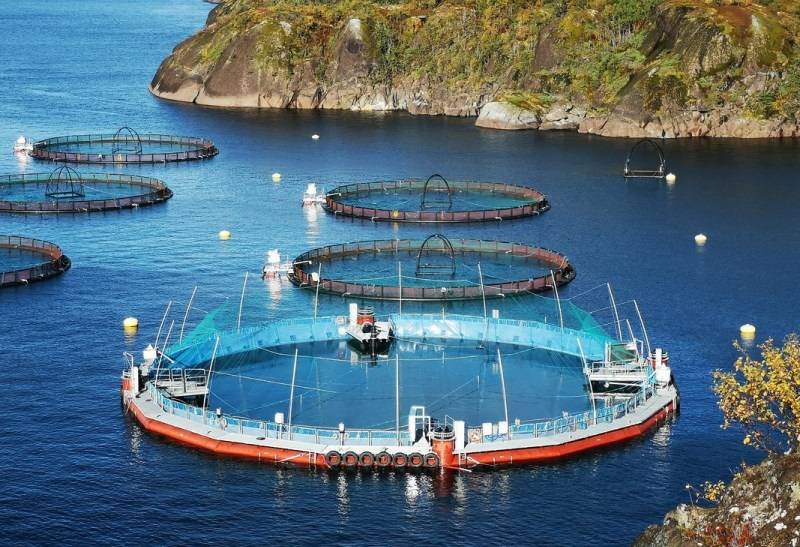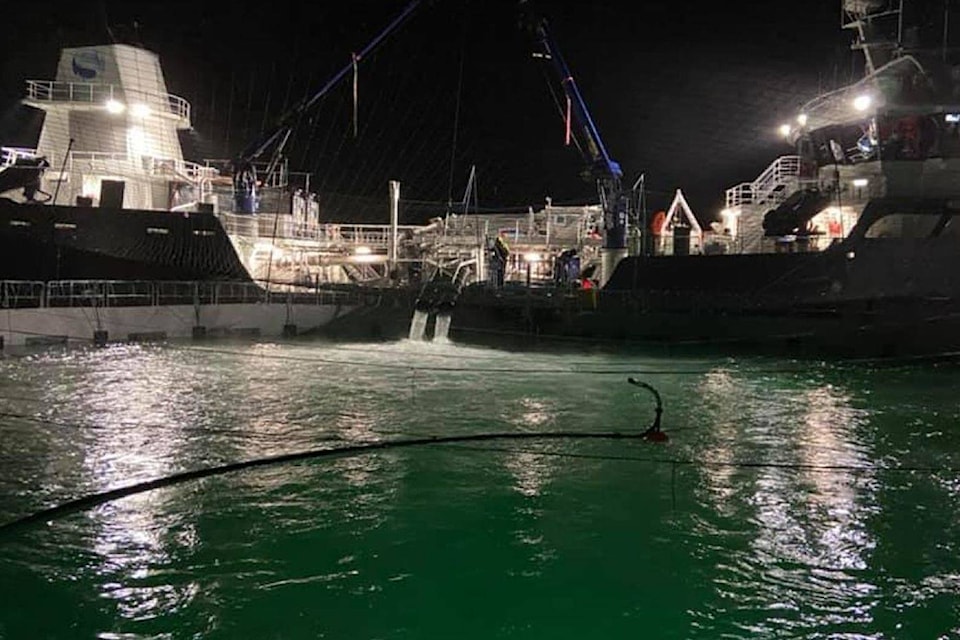A B.C. salmon farm operator has launched sea trials of a new containment system designed to eliminate the transfer of sea lice between wild and farmed populations.
Cermaq Canada announced today it has stocked 495,000 smolts in its semi-closed containment system (SCCS) in Millar Channel on the west coast of Vancouver Island. It uses a water-pressurized polymer material that acts like a bag encasing a conventional net, serving as a barrier between the farmed fish and the natural environment. Seawater, exchanged about every 50 minutes, is drawn into the system from below the depth where parasites like sea lice are commonly found.
Cermaq says the SCCS has been successfully tested in Norway, but this is a first for B.C. waters.
READ MORE: B.C.’s declining fisheries the result of poor DFO management: audit
“Our waters are different for several reasons – including differing biodiversity, warmer temperatures and varying biophysical properties. We also have different fish welfare concerns – many of which we are hopeful the system will help to mitigate. The system has been adapted to our local waters by using four deep-water intakes to draw water into the system from depths between 22 and 27 metres. The hope is that this will potentially eliminate harmful algae and sea lice from entering the system,” project director Brock Thomson said.
Open-net salmon farms are a focus of controversy for their potential to act as reservoirs for naturally-occurring sea lice and pathogens harmful to wild juvenile salmon.
Many B.C. salmon populations are at their lowest numbers on record.
Fisheries Minister Bernadette Jordan is expected later this month to announce her decision on whether to renew salmon-farm licences in the Discovery Islands, where narrow waterways create a bottleneck in a critical out-migration route for juvenile salmon.
The 2012 Cohen Commission inquiry into the collapse of Fraser River sockeye recommended the removal of these farms by last September if their threat to wild stocks exceeded minimal risk. The industry has previously stated an abundance of science and conservation measures have gone into salmon farming since the release of the Cohen report, and DFO risk assessments in the fall found Discovery Island farms were performing below the threshold for removal.
Nonetheless, in addition to her Discovery Islands decision, Jordan also has a mandate to develop a transition plan from open-net pens in B.C. waters by 2025.
Semi-closed containment systems are one option for the industry.
The David Suzuki Foundation welcomed any technology in the sector that protects wild salmon but said only the removal of farms from migration routes will ensure their absolute protection.
READ MORE: First Nations renew call to revoke salmon farm licences
“We need to know that the semi-closed containment system truly protects wild fish,” Kilian Stehfest, the foundation’s marine conservation specialist said. “While there is some historical evidence that this approach may help control sea lice outbreaks, it is yet to be seen how it will perform in Pacific waters. We do not have evidence that a system reliant on untreated water and waste exchange with the surrounding ocean can stop the spread of viruses and bacteria from farms to migrating salmon. “
The SCCS trials will run until the spring and summer of 2022. Roughly 233,000 fish in two nearby traditional open-net pens will serve as control groups to gauge the system’s effectiveness.
Salmon will also be transferred from the SCCS to other open-net pens at two times during their growth period for further assessments, and to examine the possibility using the system as a nursery.
Cermaq Canada said the data will be shared publicly.
“The system is moored at our Millar Channel farm site which is located in Ahousaht Nation territory, and we feel the weight of this responsibility,” David Kiemele, managing director for Cermaq Canada said. “We are committed to ongoing improvements to our operations through opportunities just like this, including the testing of new technology and looking at how our fish interact with the environment around them.”

